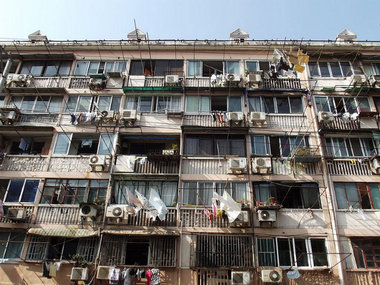In cities of the Global South, where a lack of affordable and adequate housing is all too common, effort has been made by governments, NGOs, and local communities to make inclusive housing a reality. One crucial solution that has been found effective in several cities is participatory planning, which allows the urban poor to participate in the process of urban planning.
 In Mexico City, the government's Housing Institute partners with local NGOs and CSOs to include the poor and vulnerable in housing plans through microcredit, affordable mortgages, and the preparation of housing construction materials. The program's success comes from its participatory nature: beyond giving subsidies, it involves diverse stakeholders along with the government and civil society representatives to empower the entire community.
In Mexico City, the government's Housing Institute partners with local NGOs and CSOs to include the poor and vulnerable in housing plans through microcredit, affordable mortgages, and the preparation of housing construction materials. The program's success comes from its participatory nature: beyond giving subsidies, it involves diverse stakeholders along with the government and civil society representatives to empower the entire community.
Every two decades, the Mumbai municipality updates its most basic and essential plan for the development or redevelopment of public land in the city - the Development Plan. Last year, planning authorities agreed to open up the process to public scrutiny after it was revealed that the existing plan had misappropriated public land for other uses. Since then, numerous organizations have come together around concerns in the revision of the Development Plan. An informal coalition of more than 80 organizations formed a City Development Plan Forum and drafted the People's Vision for Mumbai - the first vision for the city drafted by the people themselves in the history of Mumbai (and maybe in India). Although these consultations are not mandated, participating groups are hoping to motivate other groups around India and thereby permanently change the discourse on planning in cities to an inclusive and participatory process.
In Surabaya, where older public housing units are decaying into slums, the city government is now rebuilding the housing units with resident participation. The process of re-design required an intensive approach working with inhabitants to understand their wants and needs. For example, inhabitants requested a common public space in the building, which architects created by designing semi-circular buildings, with an open space in the middle. The government also coached the slum communities about the importance and the procedure for land legalization, and encouraged the formation of land rights community groups. These strategies were successful because low-income communities were motivated to get involved as their active participation made a real impact on their living conditions.
 In Jakarta, the government faces the challenge of building homes in cooperation with construction developers while at the same time sanctioning their misconduct, such as license misuse. Developers often ignore the balanced residential policy, which requires homes to be built with "1:2:3 composition": for every luxury home built, two medium-sized houses and three low-cost homes must also be built. There have also been cases of building permit abuse, as many of the low-cost homes are inhabited by middle- and even high-income families instead of the poor. The current government is now taking a firm position and has performed a sweep to check the identity of the occupants of the low-cost homes to ensure they have the right to be there. The local community, through participatory design, also plays a big role in this matter, as they submit information or findings of any violations during the construction process. They also report any unusual transactions, or if there is no public facility actually being built.
In Jakarta, the government faces the challenge of building homes in cooperation with construction developers while at the same time sanctioning their misconduct, such as license misuse. Developers often ignore the balanced residential policy, which requires homes to be built with "1:2:3 composition": for every luxury home built, two medium-sized houses and three low-cost homes must also be built. There have also been cases of building permit abuse, as many of the low-cost homes are inhabited by middle- and even high-income families instead of the poor. The current government is now taking a firm position and has performed a sweep to check the identity of the occupants of the low-cost homes to ensure they have the right to be there. The local community, through participatory design, also plays a big role in this matter, as they submit information or findings of any violations during the construction process. They also report any unusual transactions, or if there is no public facility actually being built.
Participatory planning integrates the poor and vulnerable into the housing development process and ensures that good intentions are translated into impact for the community. Join us on URB.im to read about housing and inclusive planning solutions from other cities and join the discussion.
Photo credit: ATM & Indra Sarathan